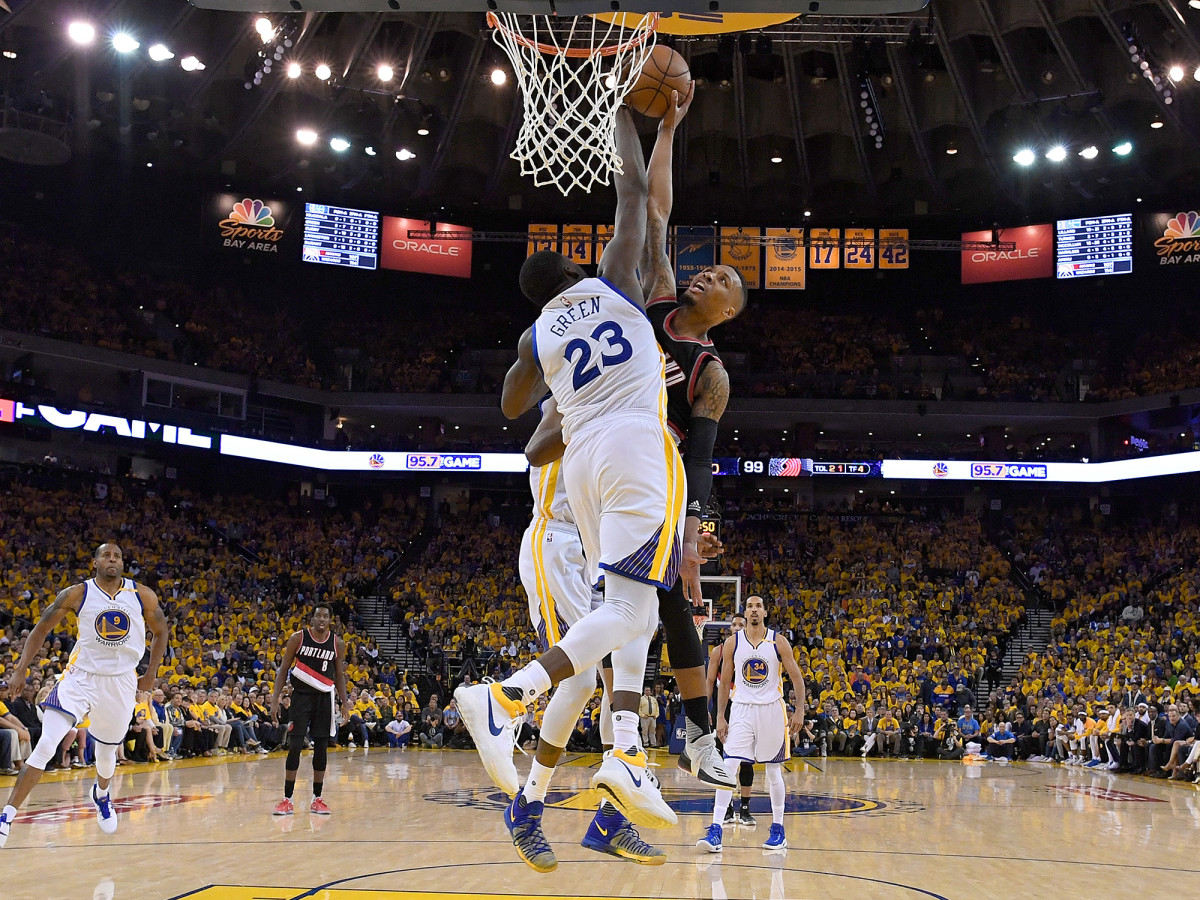The Warriors Flex First-Class Transition Defense

You can’t run with the Warriors, no matter how you try. The temptation will be there on every long rebound. Even those intent to control the pace of the game can be lured in by the open floor, seeing opportunities in it that are simply not there. It is widely understood that a transition game plays into Golden State’s own whirlwind style. Forgotten in that, though, is a critical distinction. The reason you can’t run with the Warriors is because they are so much better at stopping your fast breaks than you could ever be at stopping theirs.
All-Time Favorite Play In NBA Playoffs History?
Hidden beneath one of the great offenses of all time is not only a first-class defense, but a first-class transition defense. It starts, oddly enough, with structure. Fast breaks are generally a wild frontier. The quick push up the floor puts the defense in a mad dash, resulting in rampant mismatching and lawless positioning. Most defenders are doing whatever they can to stay in front of the ball while accounting for threats as they present themselves. Golden State usually starts with a huge advantage: many of their basic offensive formations put Draymond Green at the top of the floor, meaning that the first player back is the best defender in the league.
There’s no gaming Draymond. You don’t pass fake him; he fakes his commitment to one defender, encouraging a pass, before lunging back to the other. It’s his hesitation that dictates how a defensive possession will go.
No defender in the league picks apart a two-on-one break so surgically. The same versatility that makes Green so unshakeable when guarding the pick-and-roll plays out to even greater net benefit here. A numbers advantage in transition should bring one of the most efficient returns possible on a given possession. Green helps Golden State defy the math. In the playoffs thus far, the Warriors have allowed a paltry 0.87 points per possession on the break, per Synergy—taking what should be easy scores for their opponents and gutting them. Portland tried to race up the floor when it could and was turned away repeatedly:
[youtube:https://youtu.be/j66oPmIo5sQ]
Utah, as expected, has largely abstained. Acting Warriors head coach Mike Brown warned going into the series just how effectively the Jazz execute on the break. This is in part because they are so choosy; the most deliberate offense in the league wants to settle in to find its shots, particularly against the Warriors. As a result, Utah registered just six transition possessions in Game 1 to Golden State’s 17. To be fair: they scored on four of the six. The two empty possessions were both broken up by Green:
That there were only six genuine transition attempts to begin with is also a tribute to the fact that the Warriors, when fully committed, get back and cut off easy avenues as well as any team in the league. The Jazz want no part of that game, but in some sense they need it. Every team relies on an assortment of random scores to pad out their usual operations. They can come on offensive rebounds or other scrambled possessions. Often they come in transition. The rhythm of running is dangerous (if not self-defeating) against the Warriors, and yet the fruits of it might be essential.

One of the most damning indictments of run-and-gun teams past is that opponents found them fun to play against. These Warriors are not fun. Their offense applies such constant pressure as to be crushing. Their half-court defense—also the stingiest in these playoffs, according to Synergy—grinds you down, perhaps even to the point where a fast break seems like relief. Golden State gently encourages its opponents to get out there. They want you to take contested threes while they take wide-open ones. They hope that you’ll drive into Green out of the need to create something. The Warriors want you to run with them and they know that, in the brutal calculus of a playoff series, most teams will have no other choice. It wasn’t enough to have two MVPs and two other All-Stars on the same team. Golden State had to have the rare Defensive Player of the Year whom a defense can't even sprint to escape.
The Story Of Iso Joe: The Evolution Of A Scorer
Rim protection is essential, but can be—at least in its traditional packaging—a bit clunky. Even the best shot blockers can be strung out into space and spun around. What makes Green’s defense such an anomaly is that it’s so portable. At a moment’s notice he can sprint downcourt, position himself to contain multiple defenders, and then deploy the full arsenal. The head games. The quick feet. The impossible hands. His stops are spectacular because they don’t even require that he be set. Everything that goes into these outnumbered, fast-breaking defensive stands suggests a basket is coming. Then, with the possession seemingly in chaos and the scorekeeper’s finger hovering expectantly, Green exerts a complete control.
